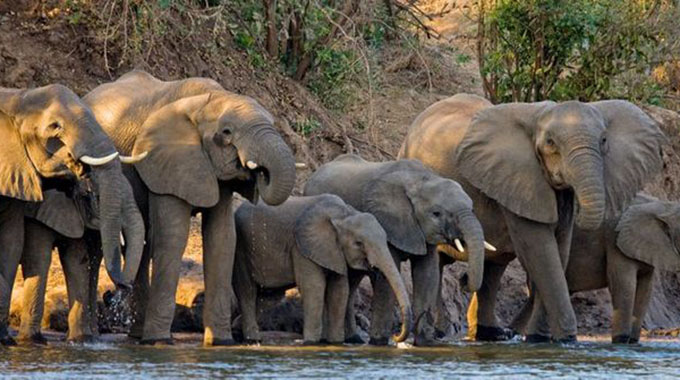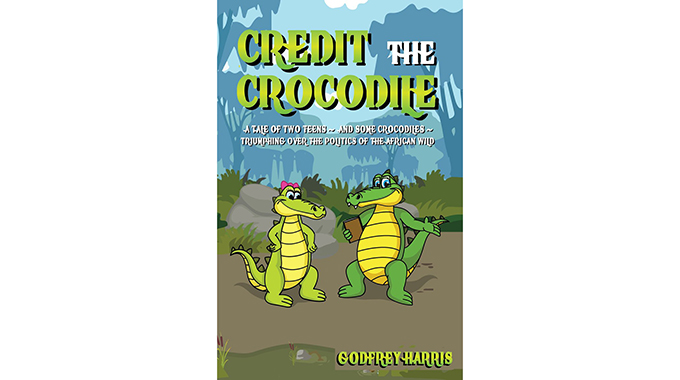Decisions on jumbos must factor in communities

Tinashe Farawo Correspondent
ZIMPARKS is the only wildlife management authority in the world which does not receive funding from central government, but despite lack of financial support, the management led by Mr Fulton Mangwanya has managed to turn the corner as far as conservation of the country’s wildlife is concerned.
This resulted in Finance and Economic Development Minister Professor Mthuli Ncube last month saying the new team at Zimparks led by Mr Mangwanya has managed to transform the wildlife management authority which has been dogged by poor corporate governance and transparent issues, among other challenges.
The then poor state of affairs at the authority led to increased cases of poaching and many other challenges, but the coming in of Mr Mangwanya in August 2017 brought a sigh of relief and without doubt the country’s wildlife is now in safe hands.
Poaching of elephants dropped from as high as 400 five years ago to only 12 in 2018. This is despite the fact that the authority does not receive funding from central government for its operations.
“However, the efforts of the new management, at the helm since August 2017, and interim board have changed a lot of governance issues that were undermining activities and operations at Zimparks,” said Prof Ncube.
There is no doubt that Zimbabwe has a proud history of successful elephant conservation, and is one of the key range states and home to the second largest remaining jumbo population in the world after Botswana.
According to the 2014 aerial survey, the country’s estimated elephant population stands at 82 092, a 20-fold increase from the 4 000 recorded in the early 1900s.
The 2014 national elephant population aerial survey has shown that northwest Matabeleland, which covers the Hwange-Matetsi block, had the highest population of elephants (53 991) followed by southeast Lowveld, Masvingo and Gonarezhou (13037), Zambezi Valley (11 657) and Sebungwe (3 407).
The aerial survey did not include elephants in private reserves whose population stands at more than 2 000 and since 2014 the figures have been increasing.
This increase has been noted despite attempts to limit elephant population growth between 1960 and 1989 through culling exercises in tsetse-infested areas and State-protected areas. Between 1960 and 1989, at least 45 000 elephants were taken off through culling and for more than nearly 30 years, the country has not been practising culling and this has resulted in the booming population of elephants in protected areas.
Between 1990 and 2006 elephant populations grew exponentially, but growth has since been limited by an escalation of poaching among other factors.
The elephant population estimate between 2001 and 2014 has, therefore, experienced a statistically insignificant change from an estimate of 88 123 to 82092 elephants.
On the other hand, human population has also increased 20-fold between 1900 and 2000, resulting in increased demand for land for agriculture and other forms of land-use outside protected areas, thereby limiting the area available for elephants with a resultant increase in human-elephant conflict.
Although human and elephant population has increased 20-fold over the last century, the land we call Zimbabwe has not been expanding. We, therefore, need to live together, hence our motto, “In harmony with nature”
Zimbabwe subscribes to the principle of sustainable utilisation of all wildlife resources, including elephants and all the decisions are science based. In short, wildlife is scientific.
Sport hunting is the principal form of wildlife utilisation whereby offtakes are adaptively managed and monitored through a participatory and science-based process.
The high economic value conferred on the elephant through consumptive utilisation has also resulted in increased tolerance by local communities.
Zimbabwe’s major elephant ranges, which is the basis for all national surveys cover 67 898 sq km, which is approximately 17 percent of the country’s total land area.
The major elephant range comprises of south-east Lowveld (10 409 sq km), Sebungwe (15 527 sq km), north-west Matabeleland (24 959 sq km) and Zambezi Valley (17 003 sq km).
Notably, the reality of elephant conservation in Zimbabwe is that the elephant populations have been increasing since 1900 to the present, despite concerted attempts to limit elephant population growth.
The expansion of human settlements and associated agricultural activities in the semi-arid areas where most elephants currently survive, has also created a big problem — human-wildlife conflict.
Human wildlife conflict (HWC) in Zimbabwe is one of the major challenges facing our marginalised communities, especially those living in areas adjacent to protected areas.
HWC is multi-faceted as it can directly affect most of the livelihood assets of the communal people.
Some of the conflicts include destruction of crops and houses (thatch), people getting killed or maimed and loss of livestock and exchange of diseases.
The cost due to these conflicts is insurmountable given that local people almost entirely rely on their crops and livestock for their livelihoods.
If people remain at the receiving end, and there is a continued lack of value attachment to wildlife, the wanton decimation of the resource remains inevitable. Needless to say, the increased number of the jumbo population has caused untold suffering to communities which live with these beautiful animals.
Over the last five years, the authority received 957 reports of elephants raiding crops in communities or destroying properties notwithstanding killing people.
Of the 957 cases, we managed to attend to 761, which represents nearly 80 percent response rate. Although the authority would have loved to attend to all cases, it does not have enough resources.
During the same period, although we are sounding like a broken record, more than 200 innocent lives have been lost in human wildlife conflicts, with 40 percent of them between human-elephant conflict.
This year alone, 15 lives have already been lost, four from elephants, not to mention hectares of crops destroyed, and hundreds injured.
This has resulted in more calls for the country and communities which bear the brunt of living with animals to benefit from this rich resource.
The growing number of elephants, without doubt is causing a lot of destruction to the vegetation and the biggest threat to the survival of elephants outside poaching is loss of habitat and climate change-induced drought, hence the need to manage the numbers.
The primary rationale for limiting elephant numbers in protected areas was to reduce their impact on woodland habitats and the loss of plant and animal species as a result of elephant-induced habitat change.
Cases of human wildlife conflict usually spike during the rainy season as elephants are attracted to communal areas by crops in the field and lions seek easy prey in the form of domestic stock because their usual prey disperse and as such become difficult to hunt.
Some of the human-wildlife conflict hotspots in the country include communities west and south of Hwange National Park, communities close to Zambezi National Park in Victoria Falls and those surrounding Save Valley Conservancy.
ZimParks’ approach to problem animals is first to protect the humans, minimise losses and, if need be, destroy the problem animal.
It should be noted that currently, Zimbabwe has no compensation system as we believe communities benefit through the Communal Areas Management Programme for Indigenous Resources (CAMPFIRE) In February, a ZimParks team was chased away and almost stoned by villagers in Bocha at a funeral of a Mr Musiwacho, who was trampled to death by an elephant.
The establishment of a compensation system is not sustainable because of lack of funds and complexities of managing the funds.
But the authority is soliciting views on human-wildlife conflict from communities, hence the need to include communities in our conservation efforts.
It should be recognised from the onset that wildlife has the potential to grow the economies of local communities.
Zimbabwe has functional frameworks such as CAMPFIRE and various eco-tourism models, through which local communities can benefit from wildlife occurring in their areas.
Tapping into such frameworks will enhance value attachment and recognition of wildlife as an economic asset for communities.
Communities need to view these animals as economic opportunities and this without doubt will guarantee the future of our animals.
Decisions about animals at international forums need to spare a thought for orphans, those injured and communities who have been impoverished by these animals after their crops and livestock has been destroyed.
Tinashe Farawo is the Public Relations Manager for Zimbabwe Parks and Wildlife Management Authority.










Comments